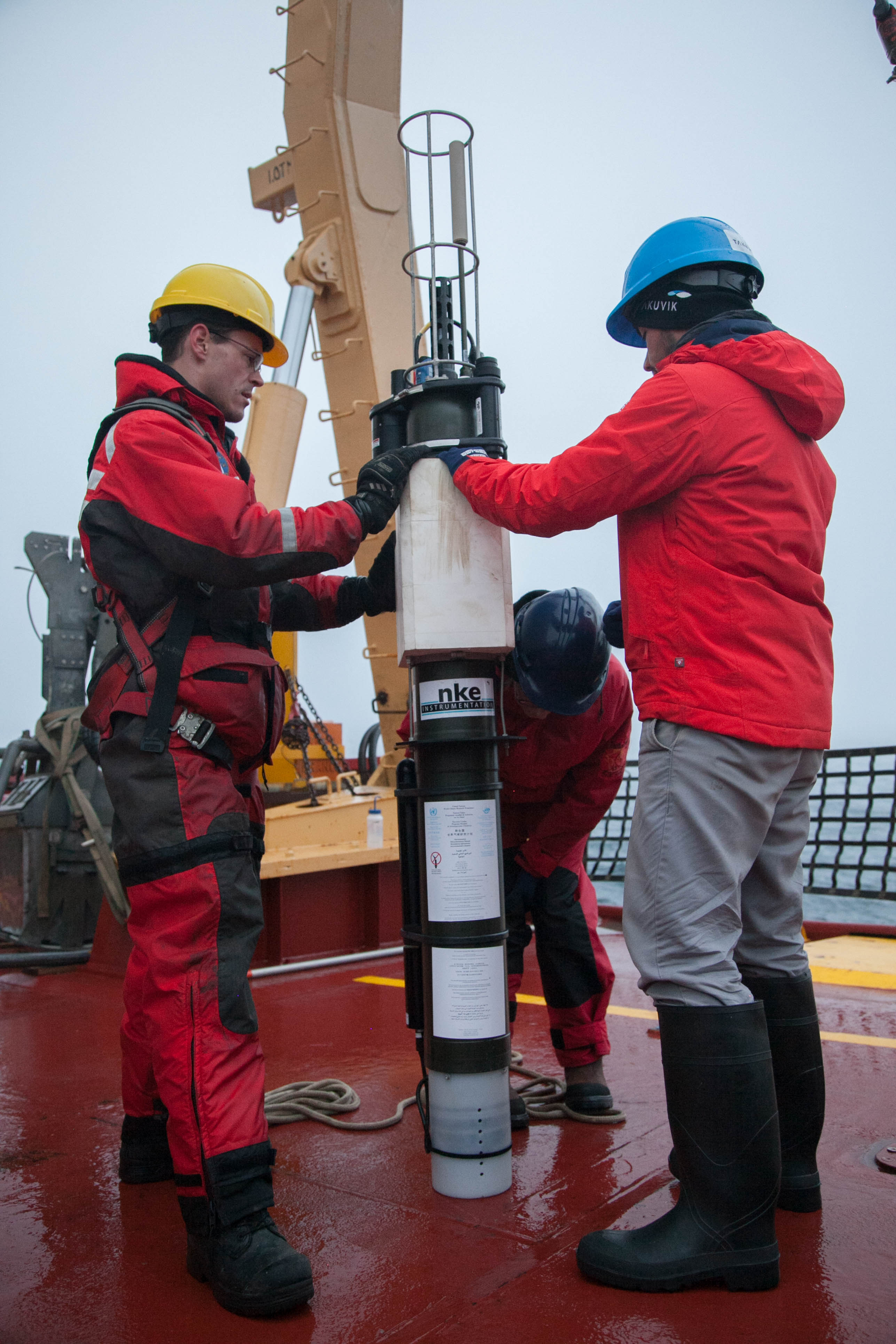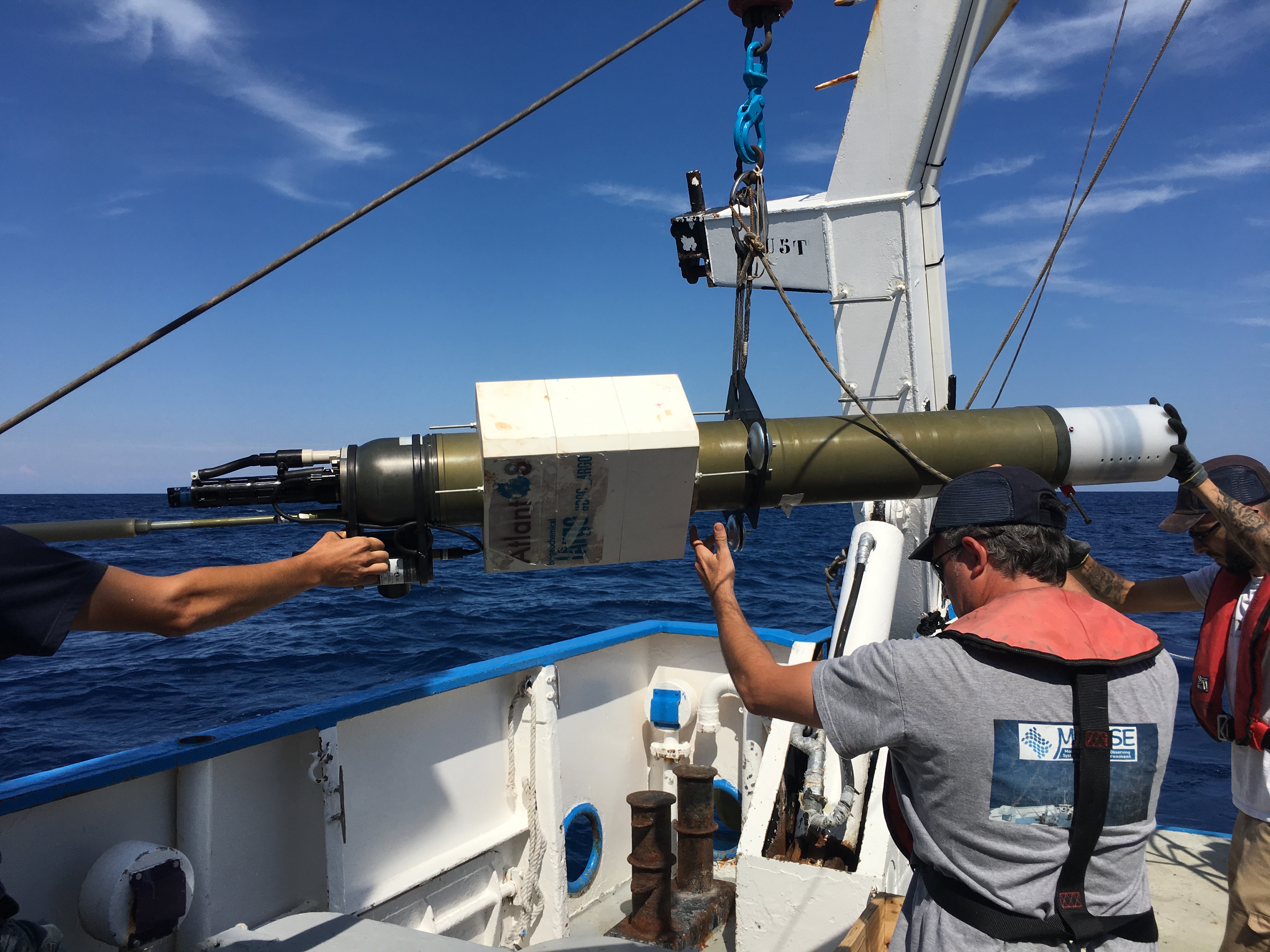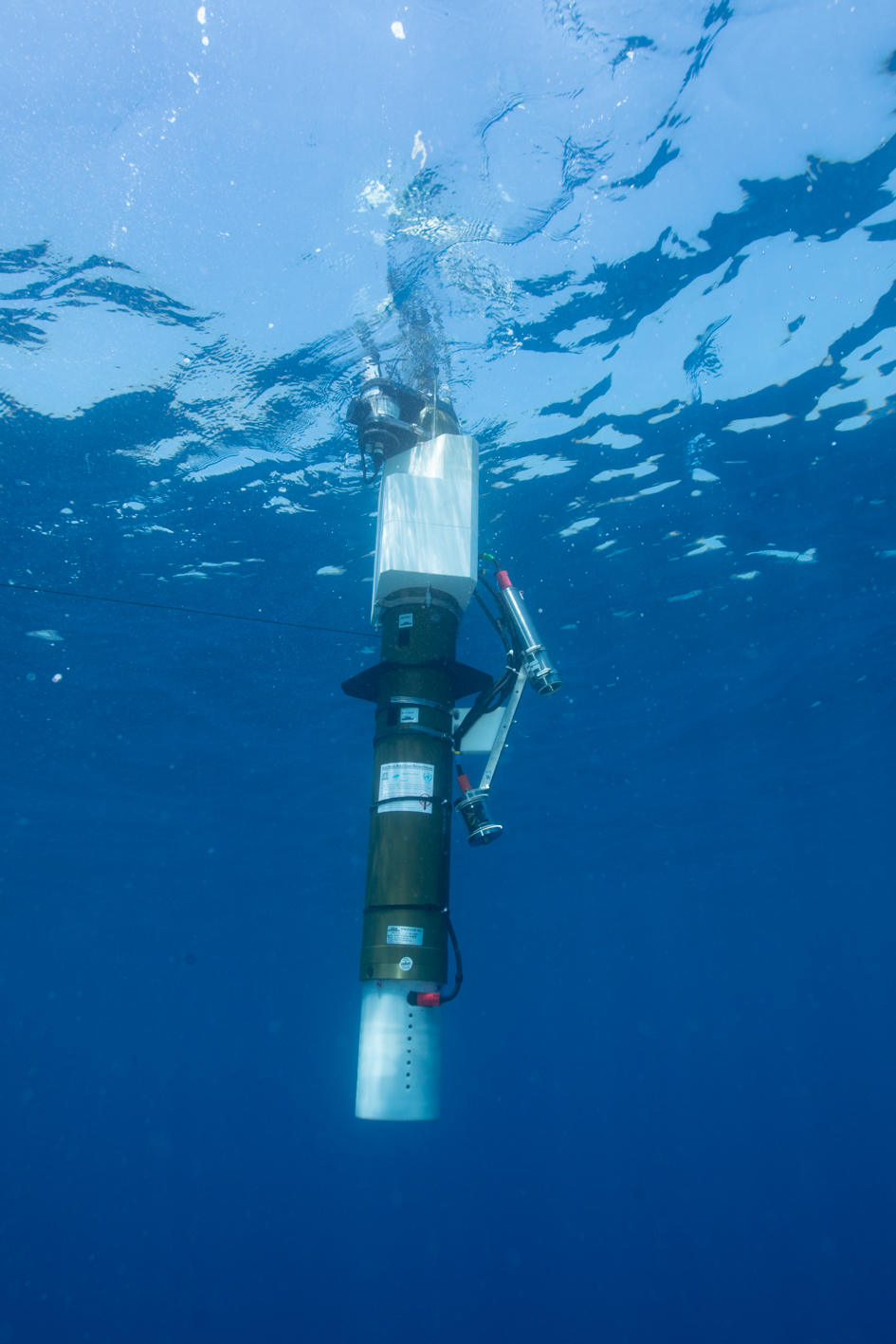The ocean Twilight Zone is a layer of water found between 200 and 1,000 meters below the ocean surface, sandwiched between the Euphotic and Aphotic Zones. The Euphotic Zone is the portion of the ocean that receives enough sunlight for phytoplankton to carry out photosynthesis, which produces living matter. In the Aphotic Zone, however, at over 1,000 meters depth, no light can reach it, leaving this vast water layer and any resident marine life in total darkness. Located between the two, the Twilight Zone only has enough light left for a few lucky predators who have adapted to locate, identify, and attack their prey in the gloomy, low-light conditions. This region of our ocean is one of the least known environments on Earth. It is critically under sampled and understudied during most oceanographic ship-based cruises, and its depths elude satellite remote sensing. Yet, it provides essential services for society and is pivotal to the ocean carbon cycle.
The Twilight Zone has only recently been recognized for holding remarkable living resources. For example, the number of small fish and squids living in this layer of the ocean is perhaps 10 to 100 times higher than we previously imagined or estimated. These stocks may be seen as an important resource in the near future, bearing in mind that human populations will grow and the demand for protein will increase. The Twilight Zone is also where a critical process occurs for regulating carbon dioxide (CO2). It is a transition zone through which CO2 passes through as it sinks from the ocean surface down to the Aphotic Zone to be locked up in deep-sea sediments for thousands of years. This key process is known as the biological carbon pump.
REFINE (Robots Explore the plankton-driven Fluxes in the Marine Twilight Zone) is a European Research Council-funded project that targets the exploration of the Twilight Zone to better our understanding of the biological carbon pump and disentangle the various biological or physical mechanisms that drive it. The unicity of REFINE is that it will undertake these explorations and associated research almost exclusively using robotics. For this purpose, the REFINE team has just finished an initial phase of developing augmented robots. These robots, or so-called profiling floats, move from the surface down to two kilometers by changing their buoyancy. The floats are central in the Argo program framework that operates an array of approximately 4,000 units globally to monitor several key physical and biogeochemical parameters in the ocean. The core Argo floats measure pressure, temperature, and salinity. The floats dedicated to the Biogeochemical-Argo mission (BGC-Argo) additionally measure pH, oxygen, nitrate, chlorophyll, and suspended particles, as well as the light penetrating the ocean. These extra measurements better help us take the ocean's 'pulse' and uncover the evolution of the biogeochemical state on the global scale in the context of ongoing environmental changes.

(Image credit: CNRS & Sorbonne Université)
To further contribute to the Argo program’s mission, REFINE has developed a new float that expands this technology's explorative and monitoring power and research scope. The REFINE float is a jumbo float with extended energy availability, allowing for longer missions or implementing extra sensors. In the framework of REFINE, the floats are equipped with three additional sensors. Firstly, the BGC-Argo's standard radiometric light sensor was replaced by a dual hyperspectral radiometer to measure the light penetrating and escaping the ocean. Such measurements help characterize the water's color within the Euphotic Zone, revealing the composition of optically significant constituents such as phytoplankton, detritus, and dissolved material. Similar optical measurements at the ocean's surface are obtained globally by ocean color radiometers onboard satellites. The introduction of these new radiometric measurements on the floats tightly links the satellite and in situ data which will be essential for upscaling float in situ measurements and its derived properties to a global level.
Secondly, the REFINE float is equipped with a transmissometer. This sensor intercepts sinking particles passing through the Twilight Zone from the Euphotic Zone to the abyss, where they will eventually be buried in sediments. This measurement allows scientists to quantify the so-called flux of exported carbon. Finally, the float is equipped with a camera that takes regular images between the surface and 2,000-meters depth from which two key measurements are retrieved: (1) the size (between 100 millimeters and few millimeters) and the number of particles and (2) the identification and enumeration of zooplankton. Because the cost and time of data transmission of these images through satellite telemetry are prohibitive, the camera sensor is equipped with onboard artificial intelligence algorithms for zooplankton recognition, so only the result of this analysis is transmitted.

(Image credit: CNRS & Sorbonne Université)
So far, more than twenty augmented BGC-Argo floats have been prepared to help disentangle and quantify the various mechanisms that drive the biological carbon pump. For a long time, researchers considered the biological carbon pump to be tightly dependent on the gravitational sinking of particles produced at the ocean’s surface. However, we know now that several processes of biological and physical origins also amplify the flux of living carbon in the deeper layers of the ocean. For example, some zooplankton organisms graze at the surface during the night and migrate to the Twilight Zone during the day to avoid predation, where they produce detritus and fecal material. This day-night migration, which is the largest animal migratory behavior on the planet, is a way to speed up carbon transport to the depths. Similarly, during the spring phytoplankton bloom, some zooplankton species migrate from the depths to the surface, graze there all the summer long constituting important lipid reserves before returning to the abyss (sometimes as deep as 1,400 meters) to hibernate during winter. This seasonal migration is another efficient mechanism that supplements carbon to a deeper layer. Physical mechanisms also contribute to amplifying the biological carbon pump. For example, when the abutting of dense and light waters at oceanic fronts occurs, dense water masses slip down or subduct below lighter ones, hence entraining the particles they contain.
The REFINE project hopes to address all these biologically- or physically-mediated mechanisms through an integrated approach using advanced ocean robots. For each robot, we hope to capture a four-year time series of the physical, biological and chemical properties influencing carbon's various transport mechanisms to the ocean's depths and how they relate to the production processes of living material in the upper layers. We will deploy the floats in specially selected open ocean areas which are expected to represent (1) a variety of production regimes of living matter at the ocean surface and (2) a diversity of transport mechanisms from the Euphotic Zone to the Twilight Zone and below.

(Image credit: CNRS & Sorbonne Université)
A lot of thought has also gone into the location of these floats. We selected ten marine areas that can be grouped along with three main oceanic climates—two of which are in the polar arctic domain (the Baffin Bay and the Barents Sea). The floats in these areas, having ice-avoiding capability, will monitor physical and biogeochemical properties during the ice-covered period. In the late-spring-early-summer, a time associated with ice retreat, they will characterize the various stages of the massive phytoplankton bloom, its impact in sustaining zooplankton growth, and on the resulting downwards fluxes of organic material to the depths. For the temperate and sub-polar environments, we selected the Labrador Sea and two regions in the Southern Ocean, one on each side of the Kerguelen Plateau. The Labrador Sea is known for having the most intense spring bloom in the ocean. The two areas in the Southern Ocean were chosen for their difference in production regimes and the physical regime that may impact carbon export. Finally, five areas have also been identified in low-latitude environments (equatorial and tropical waters). These environments are generally characterized by layers of enhanced phytoplankton at depths (~100 meters) which are not accessible by satellite detection - contrarily to other oceanic environments characterized by spring blooms. The selection of these regions will allow for data collection in the most desertic and bluest oceanic waters located in the South Pacific subtropical gyre to the more productive waters of the Arabian Sea. The Arabian Sea also has the unique characteristic of anoxic waters associated with the Twilight Zone, hence strongly impacting the biological carbon pump functioning.

(Image credit: CNRS & Sorbonne Université)
Once the robotic studies have been accomplished, data synthesis and analysis will follow. The REFINE dataset is expected to have a unique potential. It will offer science a truly interoperable dataset covering several complete annual cycles in marine areas representing the various production and export regimes throughout the global open ocean. The measurements will help us understand the relationships linking carbon transport processes in the Twilight Zone (solely attainable by floats measurements) to variables and processes occurring in the Euphotic Zone (more easily attainable by other methods including satellite, reanalysis, and climatologies). These established relationships will allow us to apply this new understanding to the global ocean and form accurate estimates of the carbon transport process within the Twilight Zone using the measurements taken from the Euphoric Zone as predictors.
In the end, the data collected by the REFINE project and its ocean robots will offer humankind a greater understanding of the biological carbon pump and the potential impacts of a changing climate to the associated services for which the society greatly relies upon.
This feature appeared in Environment, Coastal & Offshore (ECO) Magazine's 2021 Winter edition, to read more access the magazine here.





